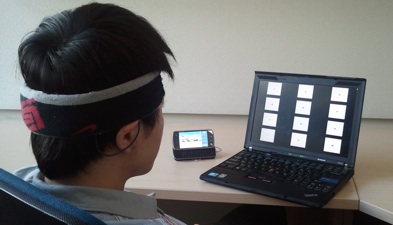Demos

CLICK to watch a new video demo of a very high-speed BCI speller.
High-speed spelling with a noninvasive brain-computer interface, Proceedings of the National Academy of Sciences, Nov. 8, 2015.
This study reports a noninvasive brain speller that achieved a multi-fold increase in information transfer rate compared to other existing systems. Based on extremely precise coding of frequency and phase in single-trial steady-state visual evoked potentials (SSVEPs), this study developed a new joint frequency-phase modulation method and a user-specific decoding algorithm to implement synchronous modulation and demodulation of electroencephalogram (EEG). The resulting speller obtained high spelling rates up to 60 characters (12 words) per minute. The proposed methodological framework of high-speed BCI can lead to numerous applications in both patients with motor disabilities and healthy people.
CLICK to watch a new video demo of a mobile & wireless EEG system. BCI for drowsiness detection. EEG signals are acquired by either dry EEG or commercially available EEG electrodes, miniture electronic circuits, and transmitted through Bluetooth telemetry to a cell phone. The cell phone is programed to assess fluctuations in individuals' alertness and capacity for performing cognitive tasks based on the received EEG signals.
CLICK to watch a new video demo of a cell-phone based brain dialer. Phone-dialing using brainwaves. In the video, Yu-Te Wang, a co-investigator of this study, chooses a phone number to dial by looking at flickering numbers on a computer screen. The cell phone receives brainwaves via Bluetooth, decodes the signals associated with the selected numbers, and then places the call. This movie was filmed by another co-investigator of this study, Dr. Yijun Wang.